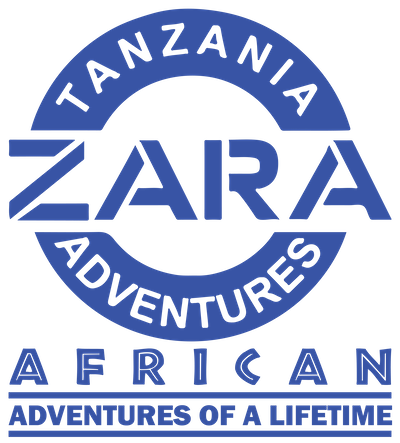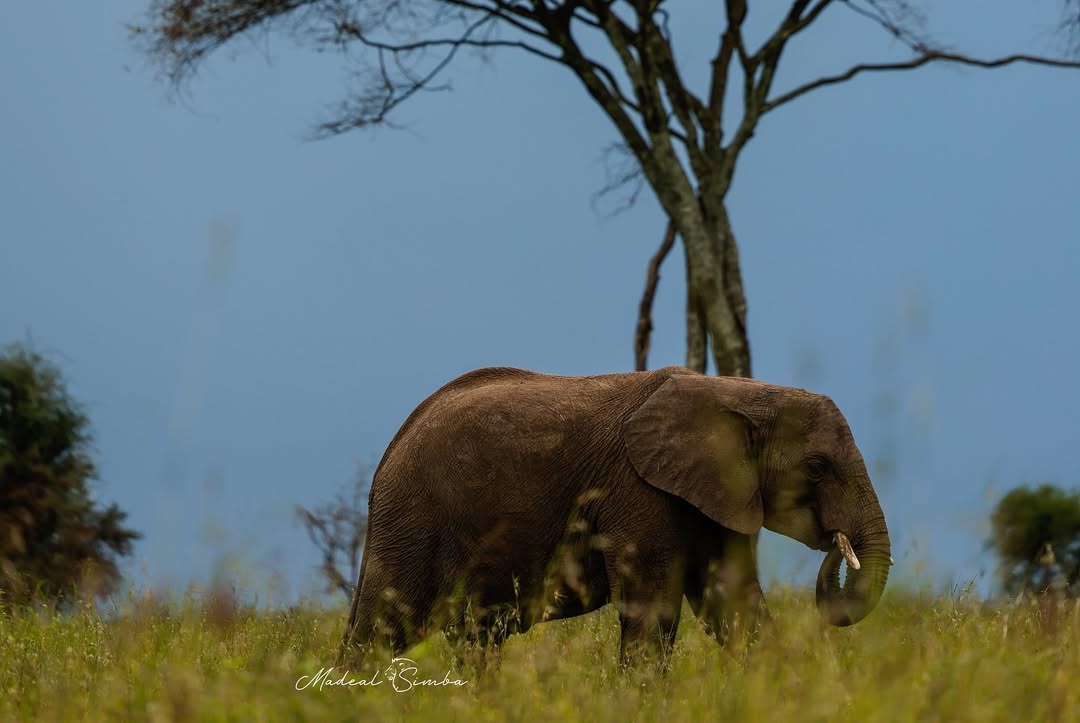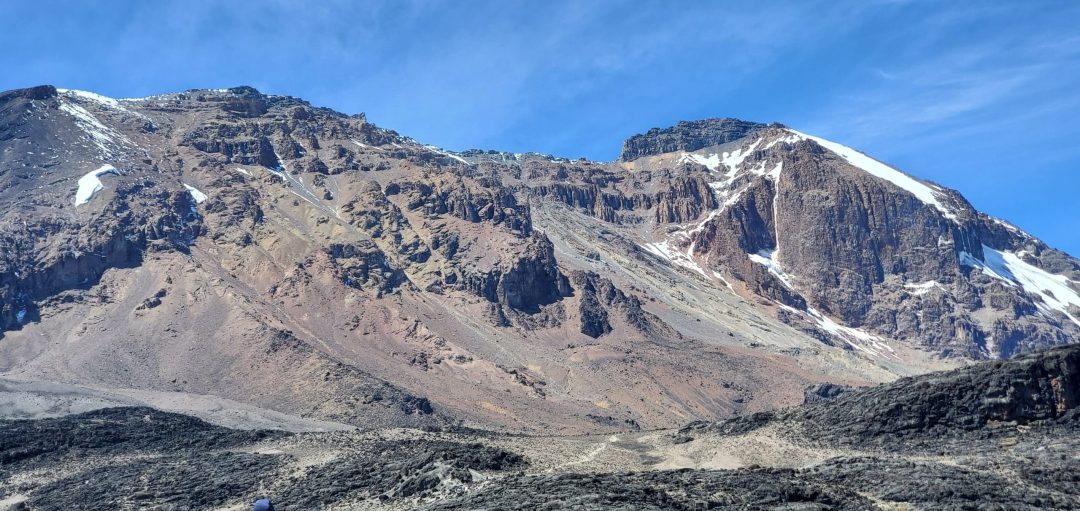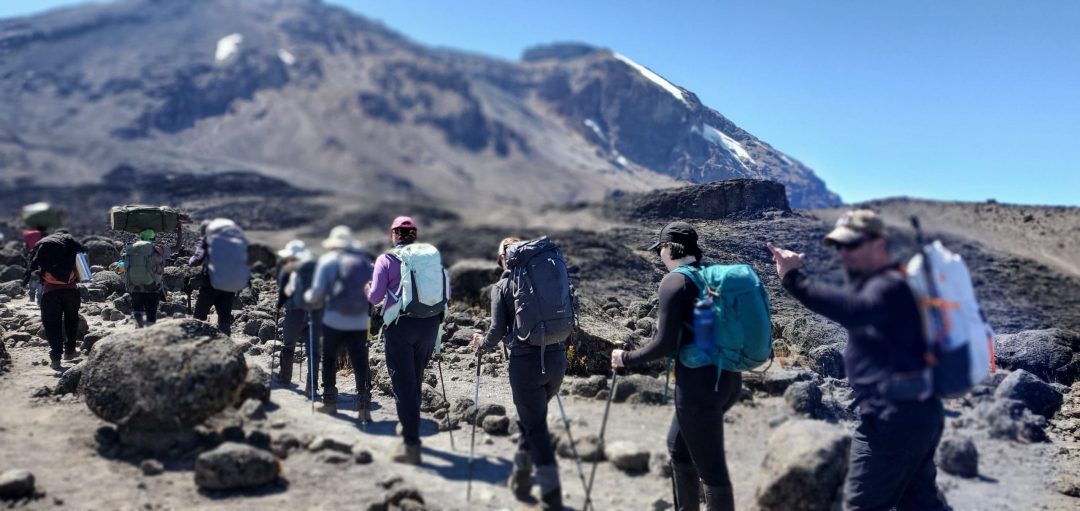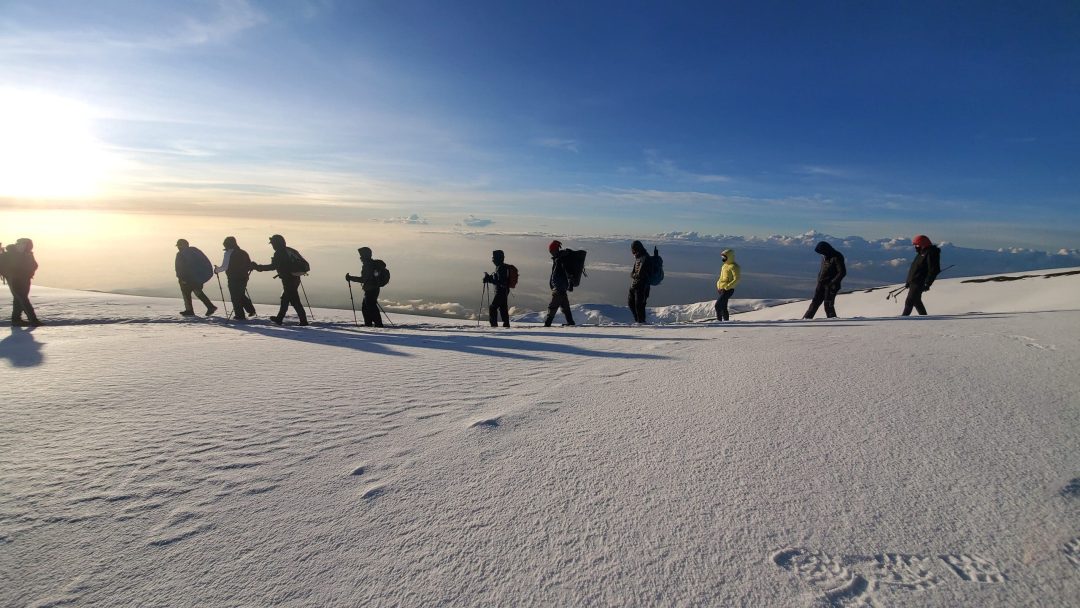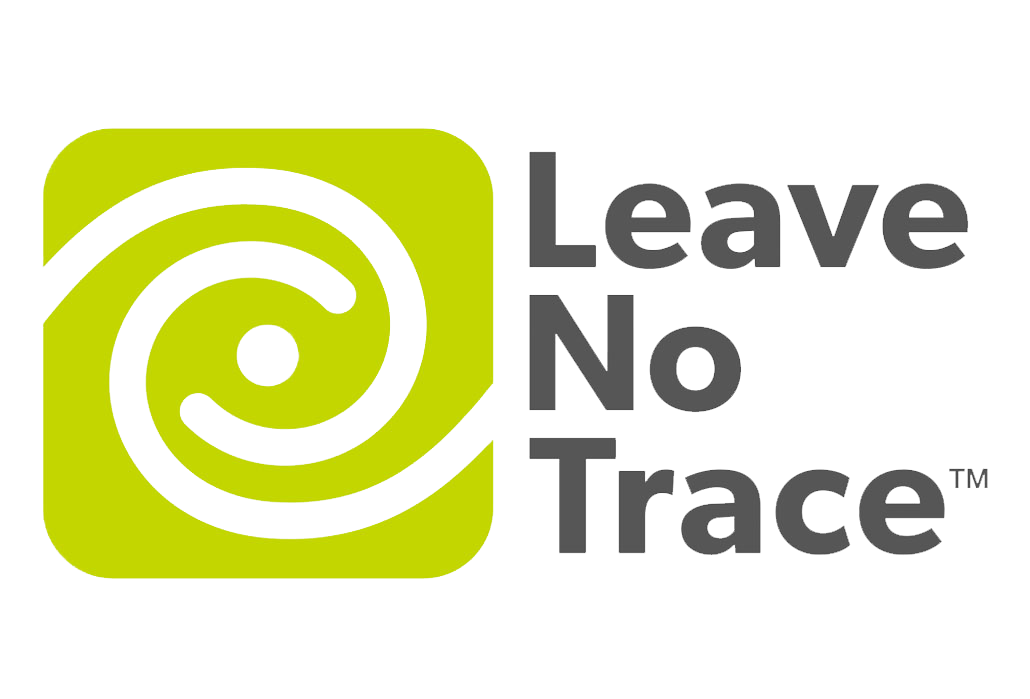Mount Kilimanjaro, Africa’s tallest peak, is a terrific hiking destination for adventure seekers. It rises 5,895 meters above sea level and offers a unique climb for hikers who want to summit timeless peaks as part of a lifelong aspiration.
Do you plan to have an adventure atop the highest free-standing part of the world? Planning majorly includes the practical aspects of climbing the mountain. It is also essential to focus on the interesting facts about Mount Kilimanjaro.
Fun Facts About Mount Kilimanjaro
Knowing some exciting information about your adventure can make it more enjoyable for you. Here are 13 fun facts about Mount Kilimanjaro:
1. Kilimanjaro is the highest free-standing mountain in the world

Kilimanjaro is the world’s tallest standalone mountain. Its summit, called Uhuru Point, is 5,895 meters, making it Africa’s tallest peak above sea level. Most of the towering mountains in the world are part of ranges. For example, Mount Everest is part of the “Great Himalayas”.
Ranges are formed from plate tectonics. Plate tectonics is the process by which the Earth’s crusts move due to geologic activity. When these plates move, the edges collide and force rocks into the air, turning them into fold mountains. These form other parts of the ranges.
Unlike other mountains, single ones like Kilimanjaro result from volcanic activity. High peaks like this form from molten rock eruptions that gather on the surface.
2. Mount Kilimanjaro is one of the seven summits.

There are seven summits across the world. Each represents the highest peak on its continent: Asia, South America, North America, Africa, Europe, Antarctica, and Australia. The table below shows the mountains in each continent and their height:
Name of Continent | Name of Mountain | Height in Metres |
Asia | Everest | 8,848 |
South America | Aconcagua | 6,961 |
North America | McKinley | 6,194 |
Europe | Elbrus | 5,642 |
Antarctica | Vinson | 4,892 |
Oceania | Carstensz Pyramid | 4,884 |
Mount Kilimanjaro is the fourth-highest mountain on the list. Interestingly, many hikers long to conquer all seven summits.
3. You can hike on Mount Kilimanjaro without technical climbing gear
Many peaks require you to use technical gear to hike on them. Summiting Mount Kilimanjaro is more basic. Climbing is easy for anyone healthy and determined. Following professional guidance makes the whole process easier.
For a good hiking experience, you need good boots, comfortable and reliable clothing, and trekking poles. You do not need ropes and crampons like other high-altitude mountains.
4. The Mountain is on the Equator
The equator is the line that divides the northern and southern hemispheres. It is imaginary and passes through the centre of the Earth, dividing it into two halves.
Mount Kilimanjaro is 205 miles away from the equator. This fact is hard to believe because it seems impossible for glaciers to form close to the hot equator. The equator’s temperature is different from all other climates because it receives a high amount of solar radiation.
5. Kilimanjaro has many unique plants.

Another Mount Kilimanjaro fact is that many plants cannot be found anywhere else. They are exclusive with up to 2,500 species. The plants are special and grow in many types, which are attributed to these aspects that let them grow:
- Warm winds from the Indian Ocean
- The mountain’s altitude
- Closeness to the equator
Examples of plants on the mountain include Dendrosenecio Kilimanjaro and Protea Kilimandscharica.
6. The meaning of the name “Kilimanjaro” is unknown
There are different theories on how the name “Kilimanjaro” came into existence. A theory stated that in 1860, Johann Ludwig Krapf said that the coastal Swahilis named the peak Kilimanjaro. He explained further that the name means a mountain of glory or caravans. However, he had no evidence to back this up.
In 1885, Jim Thompson supported what Krapf said, stating that Kilimanjaro is generally referred to as the Mount of Glory. He had no evidence, either.
The most common theory is that it consists of two words in Swahili, meaning shining mountain. However, the name of the Killi-manjaro in the 1907 edition of the Nuttall Encyclopedia shows it is a combination of two languages, Chagga and Swahili. The words define it as whiteness and mountain, respectively.
7. Mount Kilimanjaro's ice cap is disappearing

Over the last 100 years, Kilimanjaro has lost about 80% of its snow crown. By 2030, it is predicted that the mount will be ice-free, causing an irreversible change to the roof of Africa.
Human activities in recent years have increased the rate of reduction. The ice cap on the mountain is melting as a result of global warming. The overall rise in global temperatures has increased the melting of ice. Local factors such as land use and deforestation also contribute their quota to the glacier reduction.
8. It has three volcanic cones
Another example of Mount Kilimanjaro facts is that it has three volcanic cones named Kibo, Shira, and Mawenzi. Kibo is 5,895m high, making it the tallest cone. It is the central one where the Kilimanjaro summit lies. It is dormant and can erupt again. Shira is extinct already. It is said to have collapsed at 3,962m.
The third cone, Mawenzi, is also extinct. This peak is known for its sharp and craggy edges, with a height of 5,149m before it collapsed.
9. 30% of yearly climbers fail in their attempt to summit the mountain.
About 30,000 people attempt to climb the mountain yearly. Reports say about 30% of climbers fail to get to the summit. This is strange because summiting it is not a difficult task compared to other mountains. Experts attribute the failure to the feeling of unwellness that comes with altitudes. Guides like Tanzanian Tours to Kilimanjaro help you prepare adequately by providing careful training and complete instruction.
10. There are seven routes to the mountain’s summit
You can only reach the peak of Mount Kilimanjaro through seven ways. You cannot create a new way. These routes include Lemosho, Shira, Marangu, Rongai, Machame, Umbwe, and Northern Circuit Route.
Hikers are advised to take passages based on their hiking experience level. Oftentimes, novice and advanced climbers take different paths. Knowing the best route for Kilimanjaro makes your journey easier. Also, it determines how fast you will summit the mountain.
11. The fastest ascent and descent of Kilimanjaro is by Swiss Karl Egloff

The fastest ascent and descent of Kilimanjaro is by Swiss Karl Egloff. He summited the mountain and ran down in 6 hours and 42 minutes in 2014. Athletes like him regularly perform speed climbing at high altitudes. This way, they are used to the altitude sickness and acclimate faster.
Other notable climbing experiences have happened. Examples include the Spanish mountain climber Kilian Jornet, who ascended to Uhuru Peak in 5 hours, 2 minutes, 50 seconds in 2010.
In 2015, a German woman, Anne Marie Flammersfield, summited the mountain in 8 hours 32 minutes. She holds the record for the fastest ascent and descent by a woman.
Another notable fact about Mount Kilimanjaro is that the record for the fastest unaided ascent is held by Tanzanian Simon Mtuy, who summited the mountain in 9 hours and 19 minutes in 2006. An unaided ascent meant there was no guide with him, and he carried his food, clothing, and water.
The youngest person to summit the mountain is a 6-year-old American, Coaltan Tanner, who did so in 2018. Although the minimum age allowed to climb is 10 years, there is an exception for children who have significant trekking experience.
12. It has five ecological zones
Climbers experience five ecological zones when climbing Mount Kilimanjaro. Below are the zones:
- The agriculture zone: 2500-5900 feet
- Montane rain forest: 5900-9200 feet
- Low alpine health and Moorland zone: 9200-13200 feet
- Alpine desert: 13000-16400 feet
- Arctic zone Kilimanjaro: 16400-19340 feet
The weather conditions at the base of the mountain are stable throughout the year. Each zone gets colder as you climb higher. Also, some zones, such as the alpine desert, do not support plant and animal life. The Arctic zone is characterized by ice and rock, making it uninhabitable for humans for an extended period.
13. Kilimanjaro has held the highest rugby and cricket matches worldwide
Most climbers who undertake adventures on Kilimanjaro primarily aim to summit. However, in 2014, two cricket teams played on the hill at a height of 5,752 metres above sea level. The game raised over $150,000 for a charity project.
Also, in 2015, the mountain hosted the highest rugby match. The game was held in a dormant volcano crater to raise money for the Steve Prescott Foundation.
In Closing
Finding fun facts about Mount Kilimanjaro can be mind-blowing. Climbing the mountain can be challenging, but reaching the summit is a worthwhile achievement—the more Mount Kilimanjaro facts you know, the more enjoyable your climbing experience.
Frequently Asked Questions
1. How can I summit Kilimanjaro with ease?
A successful summit is the result of proper preparation. Correct preparation encompasses a positive mentality, physical fitness, and regular training. The training guides you on how to navigate rugged terrains. Also, they emphasize the importance of mental strength.
2. What is the appropriate climbing gear for Kilimanjaro?
The appropriate climbing gear includes various clothing layers to accommodate different temperature changes. Additionally, you will need sturdy walking boots that can accommodate the various terrains on the mountain. Taking a journal and music player along can boost your morale and help you summit the mountain easily.
3. Do oxygen levels decrease at high altitudes?
Oxygen levels decrease as you ascend the mountain. The higher you go, the lower the atmospheric pressure. At 19,340 feet, the air contains only half the oxygen that it does at sea level. Although the air itself has 20.8% oxygen, it is less available for use at high altitudes.
The lower oxygen and low atmospheric pressure cause the unwell feeling that comes with climbing mountains. The symptoms include high-altitude cerebral oedema, acute mountain sickness, and high-altitude pulmonary oedema.
4. Do deaths occur on Kilimanjaro?
Although there are no statistics that explicitly state this, it is estimated that about 3-6 people die yearly on the mountain. The press reports this kind of incident as a tourist casualty. The complications that arise from climbing at high altitudes are the reason for most of these deaths. However, do not be afraid, if you are adequately equipped, summiting Mount Kilimanjaro is easy.
